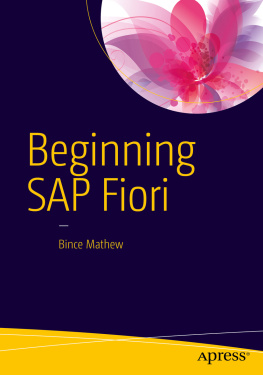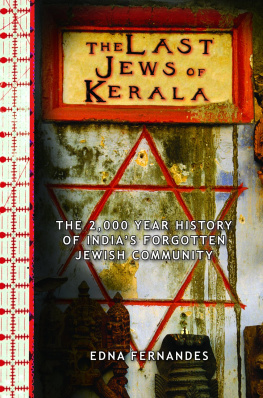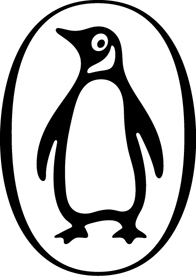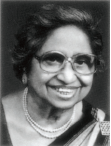Foreword
I am delighted to have the honour of writing this foreword to a cookbook by my dear friend Mrs K.M. Mathew.
Annamma, as Mrs Mathew is popularly known, is a connoisseur of artbe it music, dancing, flower arrangement or food festivals. All those who have enjoyed her hospitality know the culinary excellence she has achieved.
With her moorings in the ethos of Kerala cuisine, Annamma is an ideal hostess who knows the art of reaching out, beyond the table.
I am sure this beautifully crafted book will enrich the young and old whose passion is to entertain with culinary delights.
Best wishes to Annamma.
Kaudiar Palace
15 october, 2001
Mrs K.M. Mathew, famous wife of a famous husband, is a popular figure not only in her home state, Kerala, but at the national level as well. While her name lends itself to many good causes, Mrs Mathew is perhaps best known for her expertise in culinary art, with her recipe books being accorded an Impressive welcome in the homes of many in India and overseas. Over the years she has almost become a household name in this field, with many of her recipes proving to be innovative and interesting. Her range is vast and geared to suit every budget, from the luxurious to the spartan. While many honours have come her way, perhaps the greatest recognition is the unwavering demand for and acceptance of her books. Her success lies in the fact that she has not only introduced very many to the delights of the kitchen, but also delights, mother-like, in cooking up fabulous meals for all those who cross her path.
I am sure that this beautifully brought out book, a gift of love from the family that holds her so dear, will be very well received. Being a pure vegetarian though, I cannot help hoping that some day she will write a totally vegetarian companion to this edition.
I wish her many more fruitful years of active and satisfying life, with the grace of God.
Aswathi Thirunal
PRINCESS OF TRAVANCORE
The Setting...
Middleman to the ancient world, laced by forty-one rivers and a thousand canals, Kerala lies like a jewel fixed to the southwestern coast of India, a 580 kilometre-long stretch. The demand for pepper (often called black gold) and other spices drew traders to this land more than two thousand years ago. Food and flavour, the great levellers, brought international influences to Kerala in the first millennium in the form of peaceful traders from Arabia, Egypt, Greece, Phoenecia, China and the Roman empire.
Historical evidence shows that Apostle St. Thomas (the doubting Thomas) converted Hindus in 52 at Muziris (present-day Kodungallur, Kerala). Historians agree that Christians have been here for fifteen centuries. Muslims have evidence of a mosque in Kerala even before the death of Prophet Mohammed. Jews have lived here since the first century
. The descendants of all these denominations have lived side by side with Keralas Hindu majority for generations, creating a cosmopolitan state.
Goods from South India had reached the Middle East as early as the third millennium when, stimulated by the Roman demand for exotic goods and the discovery of the monsoon winds by Greek sailors (about
45), ships serving Rome began to sail from the Horn of Africa to Kerala in five weeks time. This shifted the focus of the spice trade from North Indian ports and land routes toMuziris, which the Roman historian Pliny called the first commercial centre of India.
Indian and Malay merchants pushed eastwards, collecting silk and cinnamon from China and precious stones and tortoise shells from Indonesia, to be loaded onto Greek and Persian ships at Muziris, which was positioned midway along the spice route between the Roman Empire and China.
More than a thousand years later, the lure of spices and luxury goods attracted a new crowd of merchant adventurers to South India: the Portuguese, the Dutch, the French, and finally the English. They too left behind their cultures, languages and ideas.
It was trade and food that launched Kerala in the hospitality business and today, the state is one of the worlds favourite destinations.
The Writer...
About fifty years ago, a Malayalam newspaper sandwiched a recipe for mutton between reports on prime ministers Nehru and Churchill. The six-inch recipe column which appeared in a June 1953 edition of Malayala Manorama, had only a mustard-sized byline: Mrs Annamma Mathew. But it marked the advent of a remarkable epicurean who was to inspire millions of Malayali women to cook well and cook sensiblyfor the writer was actually Mrs K.M. Mathew, who was almost singlehandedly responsible for taking the flavours of Keralas dim, smoke-filled kitchens to glamorous dining rooms across the world.
It was almost the first time that a recipe was appearing in print in Kerala, and the dish she prescribed in meticulous detail had the aroma of novelty. After this she went on to offer recipes, ethnic and exotic, in a regular media column, Pachaka Vidhi, which, like well-made wine, only Improved with age. Over the years she compiled her writings into more than twenty cookbooks, all best-sellers both in and outside her home state.
Her larder of ideas was always brimming over, and her recipes for the myriad new dishes she Invented sprung from her conviction that nutritious food need not necessarily be rich and expensive. For example, she experimented with an ordinary and abundantly available root like the humble tapioca and gave it a place of honour on the dinner table.
Cooking was a dull chore in sooty Kerala kitchens before Mrs Mathews delicious experimentations; her writings elevated cooking into an exciting experience for a large number of women. The new skills and knowledge worked wonders for their confidence and self-esteem, and if something else was cooking, it was womens liberation.



























